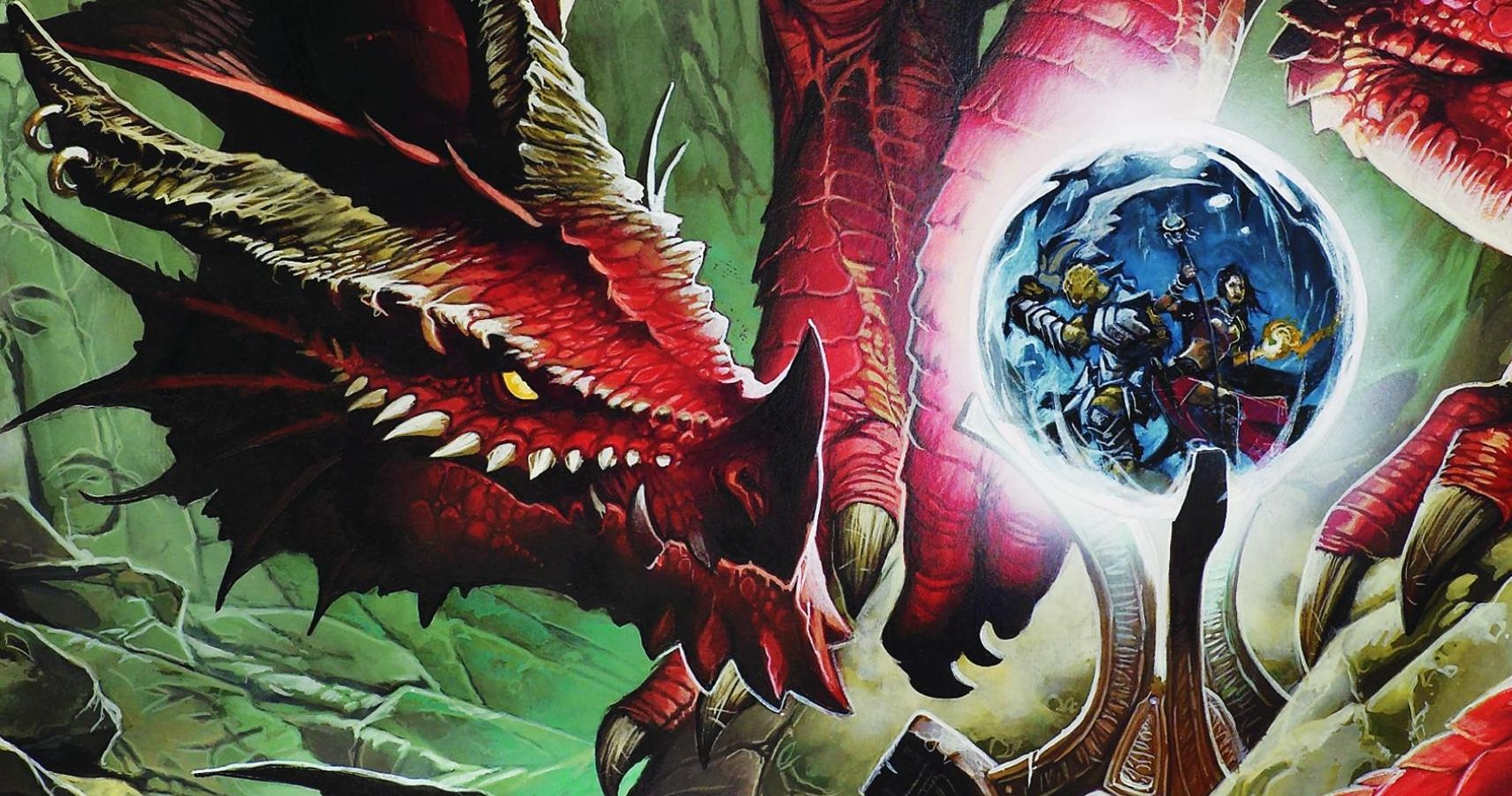As self-quarantine apparently makes a comeback, many RPG players are taking their magic missiles online. Over a decade after its initial printing, Dungeons and Dragons 4th Edition is seeing a resurgence, as Wizards of the Coast’s misunderstood masterpiece makes a heroic return. We interviewed some users of the tabletop games imageboard about their thoughts on this underground classic.
For gamers grappling with the limited customization of 5th Edition, it might be time to delve into D&D 4E. Back in 2008, audiences were fatigued by the simulant nature of Dungeons and Dragons 3rd Edition. Its arcane splatbooks cast magic users as gods among men while fighters rehearsed different ways to announce a full attack. 3E had over sixty official rule books, from five different Monster Manuals to the infamous Book of Vile Darkness, and though these expansions stuffed entire libraries with content, the game's rules quickly over-encumbered players, as they waged war with their Dungeon Masters over which books would be legal.
4th Edition offered a short rest from busted challenge ratings, obsessive-compulsive min-maxing, and stat blocks longer than novels by George R. R. Martin. But after revising 3E with D&D 3.5 only a few years before, asking d20 diehards and stunned stores alike to discard their Third Edition collections and spend their hard-earned gold pieces on a trilogy of new core books all over again was a hard sell. Many former fanatics jumped ship from D&D to Paizo's Pathfinder, which used Wizards of the Coast's generous Open Game License and Systems Reference Document to maintain compatibility with older D&D products.
What D&D 4E Did Differently
This fourth numbered entry in the D&D line went rogue, looting the essentials of earlier editions and refining them to deliver the ultimate tactical hack-and-slash experience. Combat was redesigned from the bottom up to be fun and engaging all the way from levels 1 to 30. No longer would a newly rolled adventurer and his pages of backstory perish from tripping and falling down a flight of stairs. Unfortunately, that re-imagining of traditional tropes came at a cost, cutting fan favorite classes like the monk and barbarian. Wizards of the Coast promised the return of removed character options in subsequent supplements, but psions and sorcerers would have to wait years between Player's Handbooks.
Beloved races like gnomes and half-orcs got the axe. “In 4th edition every race has a real racial identity. 'Demihuman', 'humanoid' and 'beastfolk' races are no longer lurking in dungeons or skulking around ancient ruins, but vibrant and active parts of the setting,” an anonymous poster added. Gone were intrinsic ability score penalties and level adjustment. New basic races like tieflings and dragonborn proved popular, pandering to the popularity of computer role-playing games like Bethesda's blockbuster series The Elder Scrolls. As feedback fueled further changes, surprised veterans feared that though this new game was fun, it was no longer D&D.
4th Edition was campaigning as a competitor to massively multiplayer online games like World of Warcraft that had embarked on a quest to steal its playerbase. Wizards charged ahead with an innovative suite of digital tools to close the gap: D&D Insider. Years before its time, DDI was going to offer an online character builder and a stunning virtual tabletop; however, disaster struck as its lead programmer passed away in a crime of passion. This tragic accident delivered the coup de grâce to Insider, and 4th Edition fumbled: too casual for grognards, but too convoluted for helpless WOW addicts.
4E's Return In The Digital Age
Today, online services like Roll20, Tabletop Simulator, and Dungeon Scrawl have made an attack of opportunity and achieved what DDI didn't, saving D&D 4th Edition from obscurity. “We don't have a stream of support coming in to keep our edition on a lifeline; instead, we take it in our own hands to take what's already there and craft it into personalized adventures,” one player told us.
Whereas the crunchy combat, endless hit points, and dry erase boards were slowed by pen and paper, the magic of the Internet made achieving your epic destiny a snap, whether it was becoming a “Planeshaper (you build your personal pocket dimension), Draconic Incarnation (you become an ancient dragon), or a Radiant One (you ascend and become a new star)." Immobilized indoors by the ongoing liquidity crisis, neophytes have encountered this underappreciated RPG for the first time and discovered 4E is a meticulous, refreshing, epic take on D&D.
“Figuring out precisely where to position oneself, and which power to use at any given time, is quite entertaining,” says one enamored 4E fan.
Balancing a game like Dungeons and Dragons is no small feat, but designers Rob Heinsoo, Andy Collins, James Wyatt, and the team rolled a natural 20. By dividing the classes into roles—controller, defender, leader, and striker—4th Edition forced players to master teamwork, and even sub-optimal or under-leveled characters were a welcome addition to any party. As another 4th Edition defender said, “Instead of just having different classes operate mostly independently, with roles inferred through class design rather than being mechanics in of themselves, 4e codified party roles, and made the roles work well together by default.”
Whereas in other editions one wizard can single-handedly conquer the Nine Hells, 4E is a game about putting aside your minute differences, coming together, and hunting down the Sorcerer-Kings with your friends. Because even if you’re gaming from separate basements, you don’t have to split up the party.
Source: Erik Tenkar/YouTube


